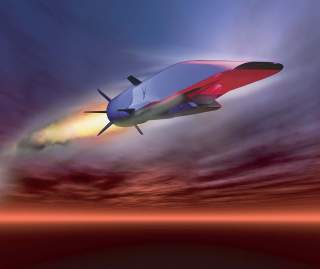America's Hypersonic Danger—Missiles that Go 10 Times the Speed of Sound
And we have no defense against them.
Way Ahead
Hypersonic weapons are a real threat to our nation. They provide a vexing challenge for our missile defense systems that without immediate action, will give our enemy the ability to hold our national interests at risk. However, there are possible actions and imperatives that are available to address many of the defense challenges. First, as stated previously, there exists a disparity in funding and level of attention regarding the development of defensive capabilities, relative to offensive weapons, that must be addressed. According to the Missile Defense Agency’s recent budget request, “that discrepancy between offense and defense shows up in the dollar values in the FY20 request; while overall hypersonic investments come in around $2.6 billion, defensive developments take up only $157.4 million.” It's important to note that Congress has expressed its concerns with our current defensive capabilities during hearings with senior DoD officials.
Secondly, the lack of stablished program(s) of record that adequately addresses "hypersonic defense" across all warfighting domains illustrates the need for a more robust and integrated joint solution. Unfortunately, there are numerous examples where system integration has been treated as an afterthought. Future missile defense systems must be developed with an eye on integration and the ability to operate seamlessly while permitting system modifications as technology evolves. Active oversight of service-led missile defense programs is required to support future integration efforts and compliance with recognized standards.
Finally, DoD must work closely with Congress to maintain sustainment of critically needed programs to meet operational requirements as quickly as possible. Additionally, it's important for the department and industry partners to be transparent regarding capabilities and the associated production timelines. It also essential to address the need for additional upgrades, sustainment costs, as well as potential doctrinal and training impacts. Our immediate involvement in hypersonic technologies is not a question of "if," but rather when, and to what degree. Our national interests are at stake.
The authors are Stellar Advisors at Stellar Solutions, Inc. (Palo Alto, CA):
Lt Gen John L. Dolan, U.S. Air Force (Retired) is the former Director for Operations (DJ-3), the Joint Staff, Pentagon
VADM Richard K. Gallagher, U.S. Navy (Retired) is the former Deputy Commander, U.S. European Command and the US Military Representative to NATO
LTG David L. Mann, U.S. Army (Retired), is the former Commanding General, U.S. Army Space and Missile Defense Command
This article by John L. Dolan, Richard K. Gallagher & David L. Mann originally appeared at Real Clear Defense. This article first appeared in 2019.
Image: Wikimedia

